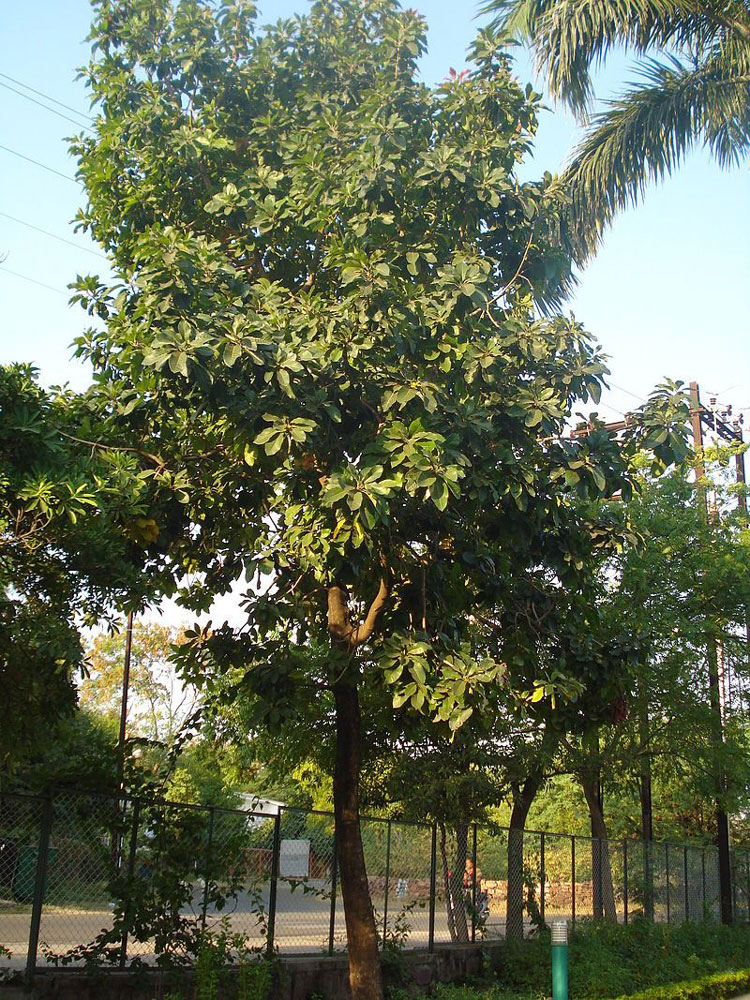Mahua - Mowra Tree

Madhuca longifolia
Summary
Scientific Classification
Kingdom: Plantae
Division: Angiospermae
Class: Dicotyledonae
Order: Ebenales
Family: Sapotaceae
Genus: Madhuca
Species: M.longifolia
Scientific Name: Madhuca longifolia (J.Koenig ex L.) J.F.Macbr.
Common Names:
English: Mowra butter tree.
Hindi: Mahua.
Kannada: Ippe.
Description:
- Habit and Habitat: large tree with a short trunk and rounded crown. Terrestrial habitat.
- Distribution: Throughout Assam.
- Morphology:
Leaf: Elliptic, about 10 to 11 inches long, bluntly acuminate, acute at base, coriaceous, lateral nerves about 12 pairs, parallel and prominent below.
Inflorescence: Dense fascicles near the ends of branches.
Flower: Buds long, pointed, rufous-hairy. Calyx 4-lobed, divided nearly to the base, the 2 outer subvalvate and enclosing the 2 inner. Corolla fleshy, yellow, lobes 7-9, erect, ovate-lanceolate, caducous.
Androecium: Stamens inserted on the tube of the corolla, 24-26 in 3 rows, anthers hairy at the back.
Gynoecium: Ovary red-hairy style long-exserted, hairy at the base.
Fruit: Berry ovoid, fleshy, greenish, 1-4 seeded.
Seed: Presence of 1-4 seeds.
Flowering and Fruiting Time: March – April. - Propagation: Direct sowing of seeds.
- Importance:
Very useful tree. The flowers are distilled for the preparation of country liquor. The seeds are crushed to yield an oil called “vegetable butter” which is extensively used for soapmaking and also edible, and used for adulterating ghee. The oil-cake is used to poison fish. - Location: Botanical Garden.
 Trees of GSS Project supported by Makerspace Belgaum Website concept and designe by
Trees of GSS Project supported by Makerspace Belgaum Website concept and designe by